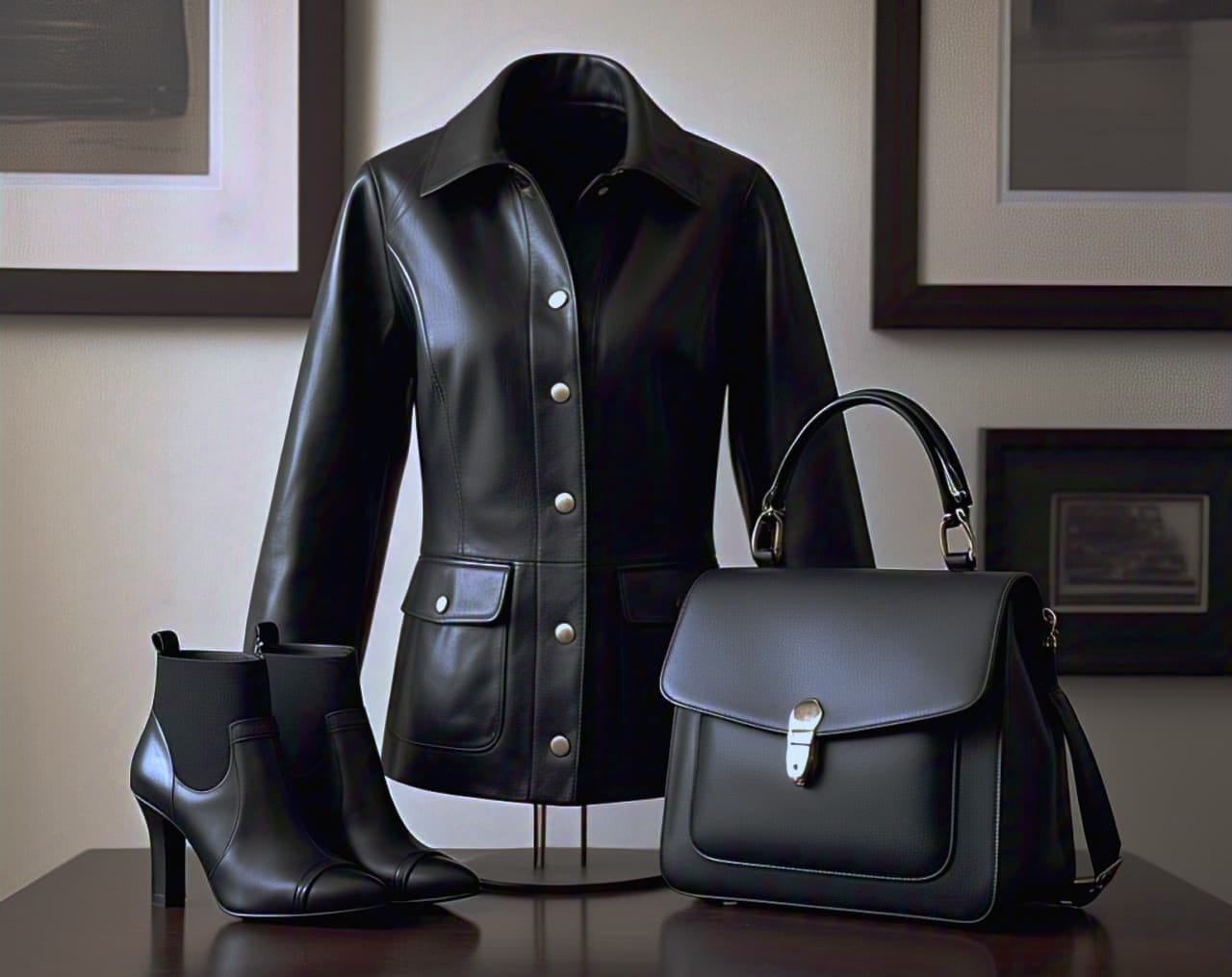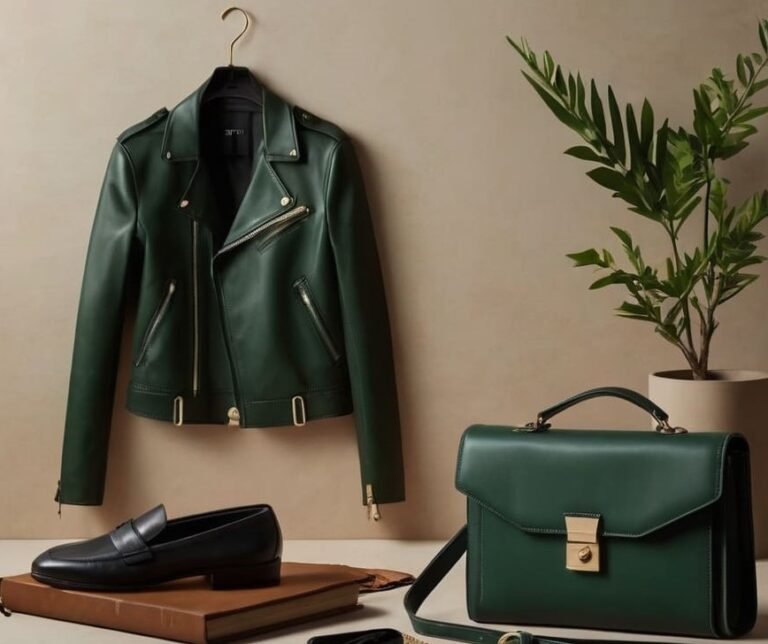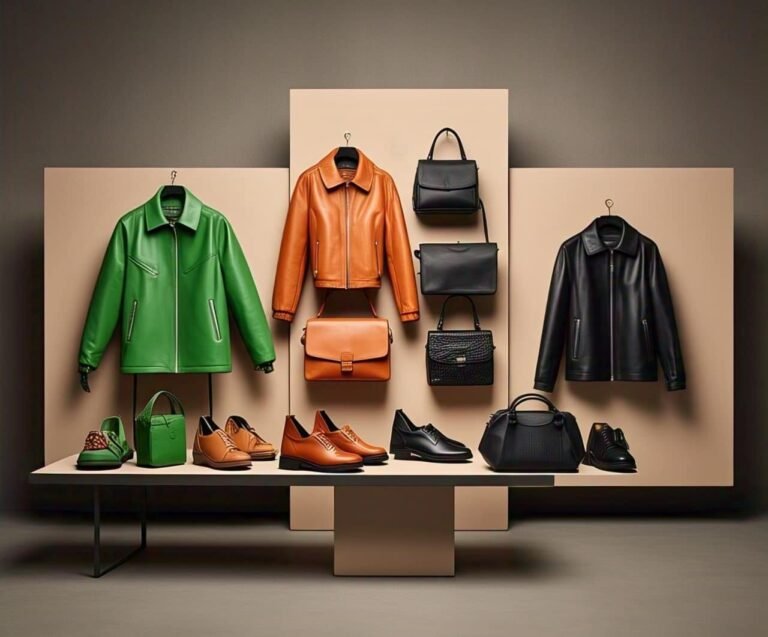What is Faux Leather? A Sustainable Fashion Revolution
You must have heard the name of leather, which is made from the skin of real animals. But here we are talking about faux leather, which is completely different. This is an alternative version of leather, meaning it has nothing to do with the dead animal skins or hides, it is made only from synthetic or plant-based materials.
Now, you must be thinking if it is an alternative, then it must be useless? But the matter is about style, durability, and being pocket-friendly. That’s why it is used everywhere from fashion industry to car seat covers. And yes, it is also a favorite choice of vegans because it doesn’t take any animal’s life to make a faux leather product.
Faux Leather vs Vegan Leather – What Are The Differences?
If you’re wondering whether faux leather and vegan leather are the same thing? But the things are a bit different. Let’s understand it in a complete and straightforward way –
Faux leather means “fake leather” which is made of synthetic or plant-based materials, but it is not necessary that everything in it is vegan.
Vegan leather means 100% animal cruelty-free leather. Meaning this is also a type of faux leather, but its focus is that it doesn’t contain any animal-based material.
The simple thing is, every vegan leather can be faux leather, but not every faux leather is vegan! Because some faux leather contains chemicals that can indirectly come from animal-based sources.
A Brief History of Faux Leather
Faux leather is not a recent invention, and it got more advanced with time. It emerged as a competitor of real leather around 1900s, when people were looking for cheap and sustainable alternatives.
In the beginning of 1900s – The concept of PVC leather came for the first time, in which the look of leather was given by mixing plastic and fabric.
1920s-1930s – It was the time of the industrial revolution and there was a boom of synthetic materials. At this time, faux leather started becoming popular in car interiors and furniture.
1940s-1950s – During the World War, there was a shortage of real leather, so army bags, jackets, and belts started being made from faux leather.
1960s-1980s – PU leather entered, which was better than PVC because it was soft and breathable. It boomed in the fashion industry.
After 2000s – Microfiber and plant-based leather came into the market, which is extremely premium and eco-friendly.
Today, the faux leather market is very broad because people want vegan, sustainable, and affordable products.
Types of Faux Leather
Faux leather is also a diverse world. It is made in different ways and each one has a different style. Let’s see which types are more popular –
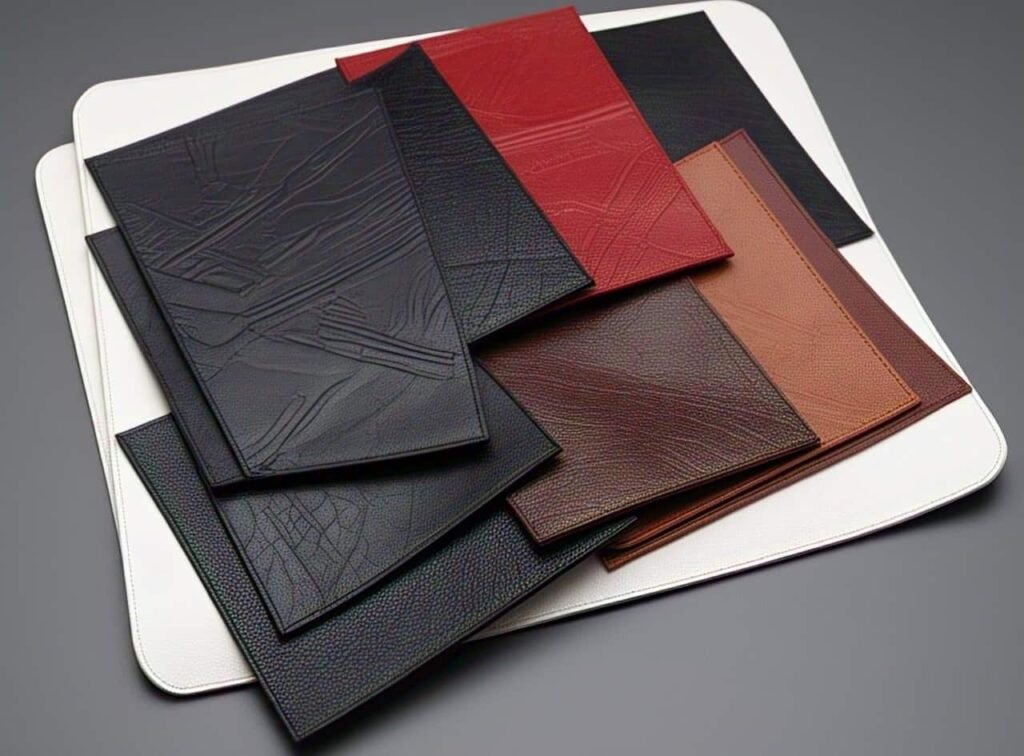
1. Polyurethane (PU) Leather
This is the most popular and eco-friendly synthetic leather. It is very soft and looks like a similar version of real leather.
- Material Used: PU leather has a coating of polyurethane which is applied on top of the fabric.
- Touch and Feel: Very smooth and soft, feels a bit like real leather.
Its biggest advantage is that it is breathable, meaning it doesn’t get sticky even in summer. But on the other hand, it is a bit less durable compared to real leather.
Polyurethane leather material is mostly used for manufacturing vegan leather jackets, handbags, sofa covers, car seat covers, shoes, etc.
2. Polyvinyl Chloride (PVC) Leather
This is another type of synthetic leather which is different from PU. It has a plastic coating which makes it more durable.
- Material Used: PVC leather has a plastic coating on the fabric, which makes it water-resistant and strong.
- Touch and Feel: Slightly hard and less breathable, meaning there can be a chance of sweating in summer.
This fabric material is budget-friendly and long-lasting, so it is used in many places. But its plastic appearance can seem a little artificial and it can’t be called a completely eco-friendly material.
Polyvinyl chloride leather is mostly used for sofa sets, car interiors, office chairs, bags, belts, and sometimes even in shoes.
3. Microfiber Leather
This is a very high-tech material and has microfiber fabric which gives it a feel like real leather.
- Material Used: It is made of ultra-fine fiber which looks like a perfect replica of leather.
- Touch and Feel: Very premium touch, almost feels like real leather.
It is better than PU leather in terms of durability and comfort but might be a little more expensive than other synthetic leathers.
Microfiber leather is mostly used for car seat covers, premium wallets, shoes, and luxury vegan leather furniture.
4. Plant-Based Faux Leather
This is a new trend that people are liking these days. It is made from natural materials and is quite vegan-friendly.
- Material Used: It is made from plants like pineapple, mushroom, apple skins, and cactus.
- Touch and Feel: Feels organic, soft, and premium.
This is the most eco-friendly and sustainable option but it is a little expensive and is not easily available everywhere.
It is used in high-end fashion brands, premium wallets, handbags, and jackets.
5. Silicone Leather
This is the latest futuristic material which is an upgraded version of synthetic leather.
- Material Used: It is made of silicone-based coating that makes it even more strong and waterproof.
- Touch and Feel: Soft, flexible, and better quality than real leather.
It is heat-resistant, waterproof, and durable. But its cost is higher compared to PU and PVC leather.
It is used in high-tech car interiors, medical equipment covers, and outdoor furniture.
6. Composite Faux Leather
It is a blend of two or more materials which makes it customizable and mostly used in jackets, sofa covers, seat covers, and office furniture.
- Material Used: It is a mix of PU, PVC and microfiber.
- Touch and Feel: The feel also varies on the basis of different materials.
This is a versatile and universal leather but not every composite leather is of the same quality. However, it depends on the brand.
How is Faux Leather Made? – Breakdown of Each Process
There are different ways of making faux leather, but the basic principle is the same, take a fabric base, paste synthetic or plant-based coating on it and give it a leather-like look!
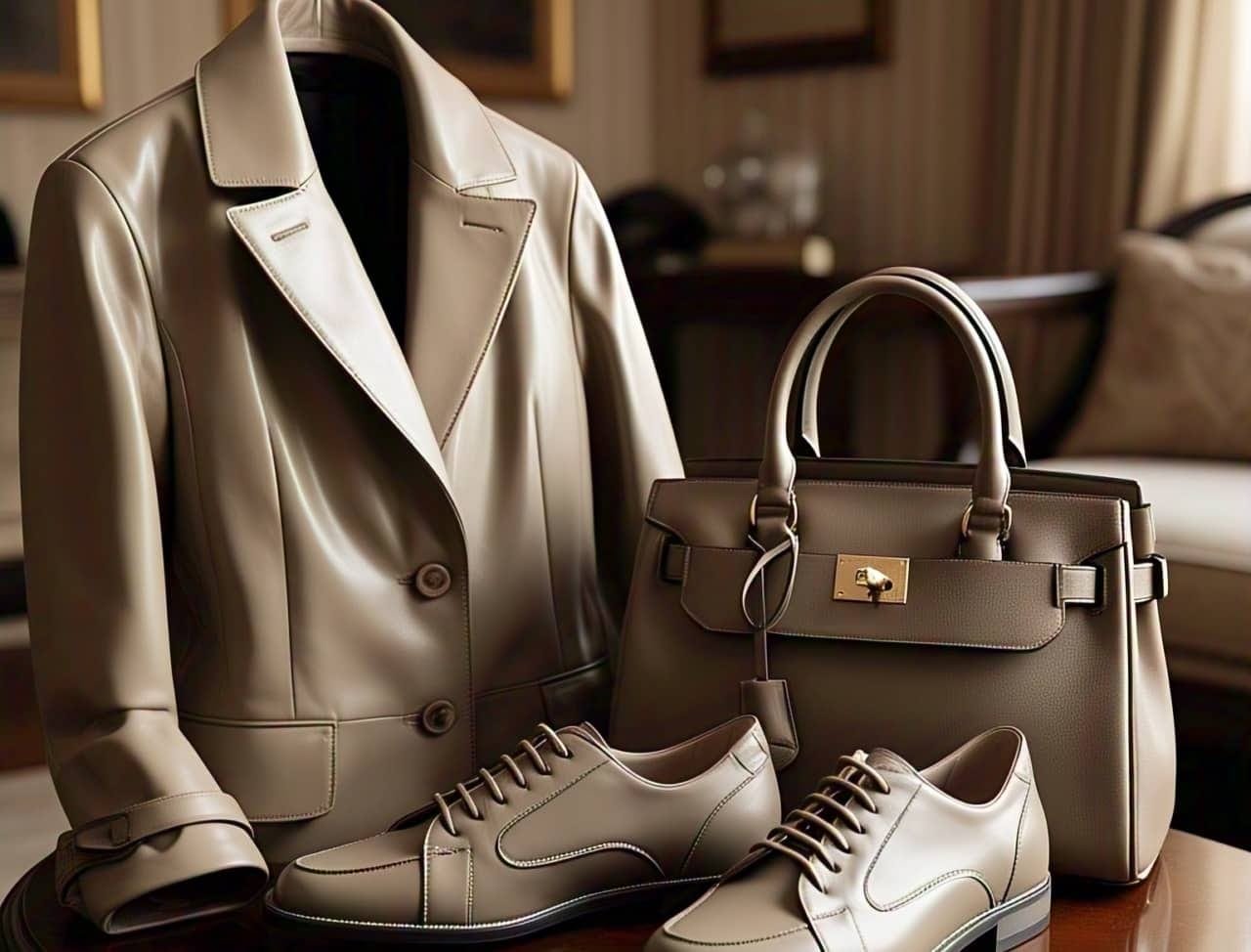
Imagine that the magic of real leather is being recreated by a machine! Let’s break it down step-by-step:
Step 1: Preparing the Base Material
A basic fabric is taken, which is mostly cotton, polyester, or microfiber. This fabric acts as the skeleton of the leather.
This base should be completely solid and flexible so that the final product that comes out looks like real leather and is strong as well.
Step 2: Applying Synthetic Coating
Now the real magic happens when the synthetic layer is pasted. This synthetic layer is made of Polyurethane (PU) or Polyvinyl Chloride (PVC).
The leather with PU coating is soft, flexible, and breathable, while the PVC one is a bit hard and waterproof.
If high-quality faux leather is to be made, then a microfiber layer is also added, which gives it a more natural look.
Step 3: Embossing – Giving the Look of Leather
Till now, only a plain synthetic layer has been made, but there is also a thing of giving it a texture like real leather.
An embossing roller is used for giving it a texture which copies the texture of real leather and puts it on the faux leather.
This gives grain and pattern like real leather on the faux leather, which makes it more realistic.
Step 4: Coloring and Finishing Touches
If you want to give style and texture finish to leather, then coloring is the key.
Different dyes and coatings are applied to it which increases its final look and durability.
Sometimes a matte finish or glossy finish is also given, which depends on the market or consumer’s demand.
Step 5: Cutting and Final Product Making
This leather is prepared in large sheets which are used to make different products such as jackets, bags, car seats, furniture, shoes, and everything that you can imagine!
These sheets go to the manufacturers who cut it as per their requirement and use it.
Pros of Faux Leather
This is a budget-friendly and stylish version of leather, so obviously it has its own benefits. Let’s see them one by one:
- Pocket-friendly – It is cheaper than real leather, so it is a great option for those who doesn’t want to spend too much money on a product.
- Animal-friendly – No animal is killed during its manufacturing, so vegan-conscious people can use it without any doubt.
- Looks classy – High-quality faux leather looks like real leather, so the style is absolutely great.
- Water-resistant – PU and PVC leather are waterproof, so no tension of water falling.
- Easy Maintenance – Real leather needs polishing and conditioning but for faux leather, just wipe it and you are done.
- Variety of Products – It is synthetic, so it can be modified in every way.
Cons of Faux Leather
It has its advantages, but it also has some down points. Let’s see its drawbacks:
- Less Durable – It starts peeling or cracking after some time.
- Plastic-based – PVC leather is not fully biodegradable, which can be a little harmful for the environment.
- Not For Rough Use – It doesn’t give the pleasure of aging like real leather, and if kept in extreme conditions, it starts getting worn out quickly.
Future Applications of Faux Leather
The faux leather industry is booming these days, but your mind must be thinking, what is its future? Meaning, will this industry grow further or will it sink? Will people shift completely from real leather to faux or vegan leather? Let’s do a complete breakdown, in which we will explain about the future of faux leather.
The leather market is growing very fast and people have now started paying attention to the environment and animal welfare, and this is the reason why the future of faux leather looks really bright! Let’s see which trends are coming in the market –
- Boom of Plant-Based Leather – Now people are bored with synthetic plastic leather, so now this leather is being made from pineapple, mushroom, apple skins, and cactus! This can become the top player in the faux industry in the future due to being eco-friendly and sustainable.
- Better Durability and Real Feel – Till now there was an issue of peeling and cracking in faux leather. But with new technologies, a more durable and real leather-like feel is being developed. Microfiber leather and silicone leather are the top contenders in this.
- Shift of Luxury Brands – Brands like Gucci, Stella McCartney, and Tesla are also shifting to vegan leather. This means, the demand is going to increase!
- Government Policies and Bans – Many countries are now imposing restrictions on animal leather, and in the future it is possible that real leather becomes premium or limited. In that case, the faux leather will become more popular.
The future of faux leather is very strong! In the future, both quality and sustainability are going to improve, and it is possible that real leather might be completely replaced!
Maintenance Tips of Faux Leather
Faux leather is cheap and stylish, but if you do not maintain it properly, it will start getting fat and peeling in a year or two! To keep it long-lasting, you will have to follow a few care tips. Well, let me tell you some very simple and easy ways –
1. Regular Cleaning
It is very important to clean faux leather regularly, otherwise dust and dirt can spoil its texture.
Wipe it once a week using a soft, dry microfiber cloth, and it will keep its shine intact. If it gets too dirty, you can use a little water and mild soap.
2. Keep Away From Direct Sunlight
If faux leather is repeatedly exposed to sunlight, its coating will become weak and cracks can appear.
So always keep it indoors, and if you’ve got a faux leather car seat, park in the shade or use a sun-protective cover.
3. Stay Away From Harsh Chemicals
Don’t clean faux leather with acetone, bleach, or alcohol-based cleaners, otherwise its surface will start getting fat!
Just use a mixture of mild soap and water, or use a leather-friendly cleaner!
4. Moisturize
Just like real leather needs conditioning, similarly, faux leather also needs a little moisturizer.
Just remember, don’t use chemical-based products, use only water-based leather conditioner.
5. Protect from Scratches
Faux leather gets scratches quickly, so keep it away from sharp objects or pets.
If there is a light scratch, petroleum jelly or a leather repair kit can cover it a little.
How to Store Faux Leather To Avoid Wrinkles
If you don’t store faux leather bags, jackets, or shoes properly, then they will start getting worn out, dried, or sticky very soon! So, follow these tips –
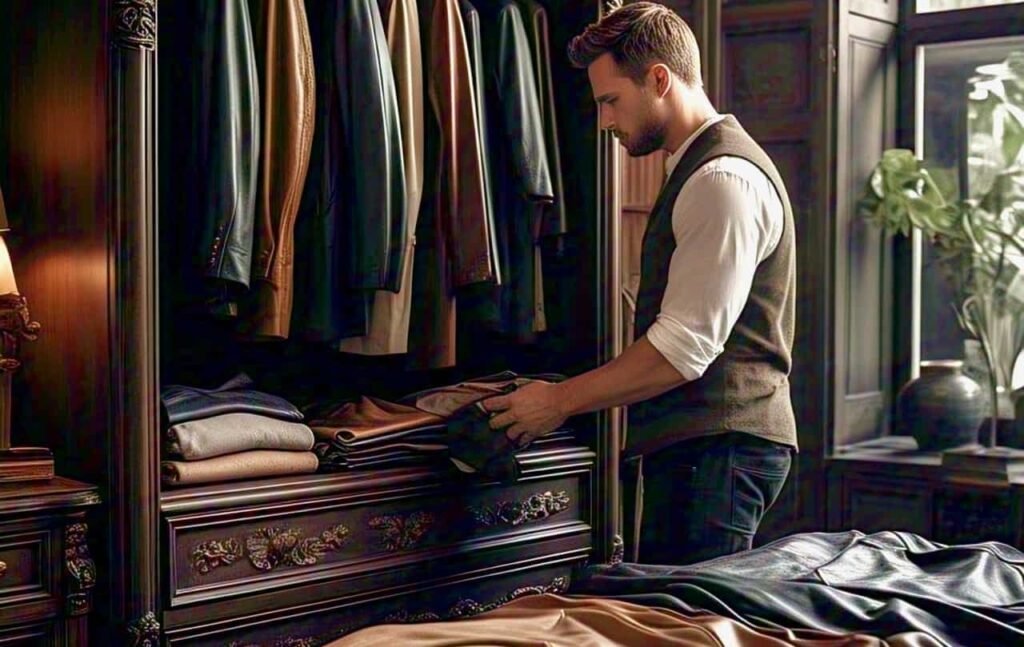
1. Always Keep It In A Dry And Cool Place
Faux leather gets damaged quickly due to humidity and heat, so always choose an airy and slightly cool place! If there is too much moisture, put silica gel packets in the storage.
2. Don’t Fold, Keep It Straight
Don’t fold jackets or bags, otherwise there can be permanent lines and cracks in them. Always keep it hanging on a hanger or spread it on a flat surface.
3. Don’t Store In Plastic Bags
If you store it in a plastic bag, then the leather can start sweating, and its coating can become sticky. Store it in cotton cloth or a breathable cover.
Frequently Asked Questions
1. Is faux leather waterproof?
Yes, PU and PVC leather are waterproof, but microfiber and plant-based leather might absorb some water. So if water spills, wipe it quickly otherwise the surface of faux leather can become weak.
2. Is faux leather better than real leather?
It depends! If you want pocket-friendly and animal-friendly, then faux leather is the best. If you want durability and a luxury feel then the level of real leather is on the next level. Maintenance of faux leather is easy, but real leather has a longer life.
3. What does faux leather smell like?
Real leather has a distinct natural smell, but faux leather can have a chemical or plastic-type smell. If you don’t like that smell then keep it in fresh air or spray a mild perfume.
4. What is the life of faux leather?
It depends on the quality. Good PU leather can last for 5-7 years if taken care of properly. Cheap stuff will start to get worn out quickly, so always choose branded and good quality.
Conclusion
The simple thing is, if you are looking for cheap, stylish, easy maintenance, and animal-friendly option, then faux leather can definitely be the best option for you! But yes, if you want long-term durability and a natural feel then real leather has a different level. You should make the right choice according to your budget and requirement.

